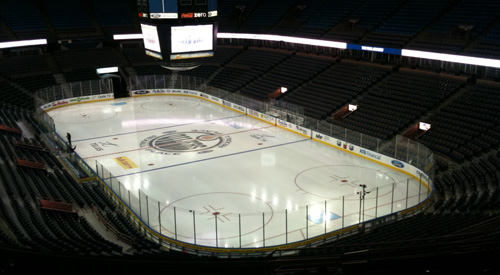
The fineprint regarding the future home for the Oilers
Daryl Katz is crying poor.
Katz, who Canadian Business reports has a net worth of $2.8 billion, has convinced the city of Edmonton to subsidize a new arena for the Oilers.
City council voted 10-3 on July 17 for consultants to continue design work on a proposed $450 million downtown arena. However, that number is already a distant figure as costs are estimated closer to $485 million.
Currently, the cost breakdown is heavily weighted toward public money: $125 million from taxes on downtown growth and other city money, $125 million from a ticket tax and $100 million from Katz. That still leaves the project $100 million short of the initial estimated cost, which planners hope is picked up by the provincial government.
The public is forking over the construction money up front and Katz will pay his $100 million contribution over the next three decades. In addition, the city has promised the Oilers $20 million in promotional funding over the next 10 years.
In essence, Katz is holding the city ransom to get this sweet deal. He claims the team isn’t making any money and that it can’t survive in Edmonton without a new building.
[php snippet=1]
According to Forbes, however, the Oilers posted the fifth-highest operating income in all of hockey last year with a total $17.3 million. That figure was lower than only the Leafs, Canadiens, Rangers and Canucks, four of the most valuable franchises in the NHL. The franchise is also valued 15th-overall in the NHL, making it one of the league’s stronger teams.
To justify the use of public money, both Katz and Edmonton Mayor Stephen Mandel claim a new arena is in the best interest of the citizens of Edmonton. They say it will spark a downtown revival and transform the city in the process.
“Our downtown sorely needs an evolutionary project that’s going to make a change to our city,” Mandel said in a speech before city council.
Unfortunately, studies have shown publicly funded arenas rarely spark the type of long-term benefits that the public is promised.
Dennis Coates and Brad Humphreys published a review of the empirical literature on the topic and found little evidence that publicly subsidized arenas spur economic development, income growth or job creation, stating that “[a]rticles published in peer reviewed economic journals contain almost no evidence that professional sports franchises and facilities have a measurable economic impact on the economy.”
For example, one study examined the economic impact strikes and lockouts have on cities. In theory, if sports generate the type of widespread benefits that owners suggest, there should be a major hit to the economy during a strike because no outside visitors are being drawn to the city. The study found this was not true and that real income per capita did not fall during work stoppages.
Another study found that the real income per capita in metropolitan areas does not increase for cities that host playoff games compared to those that do not host playoff games. If sports had such a positive impact on a city, then the increase in games should produce a similar increase in tangible economic benefits. This is not the case.
Not only does the research suggest that Edmonton will fail to benefit from subsidizing Katz’s new state-of-the-art arena, but there is some evidence that shows the cost to Edmonton will be far greater than the $250 million they have already pledged.
Judith Grant wrote an article in 2005 explaining the true cost of new buildings is far higher than most people realize due to omission of public subsidies for land and infrastructure, the ongoing costs of operations, capital improvements, municipal services and property taxes. Accounting for these omissions increases the average public subsidy by $50 million per facility.
One of the most frightening case studies is in Hamilton County, where citizens handed over upwards of $450 million to build new stadiums for the Cincinnati Bengals and the Cincinnati Reds. The people of Hamilton County are increasingly paying more and more for those stadiums each year, thanks to assuming more than $1 billion in debt to finance the project. In 2008, the cost per year was $29.9 million, or 11 percent of the county’s budget, and in 2010 it rose to $34.6 million, 16.4 percent of the budget.
The voters of Hamilton County approved the measure because the Bengals threatened to move the team. Edmonton is similarly giving into Katz’s demands over fears their beloved Oilers will be relocated. The era of Quebec City and Winnipeg losing teams isn’t very far from people’s memories.
Excavation on the new arena in Edmonton is slated to begin in January 2013, with the ultimate goal of having the arena ready by the fall of 2015, just in time for the Oilers to start the 2015-16 season. How long the citizens of Edmonton will be paying for the project is another matter.
[php snippet=1]

